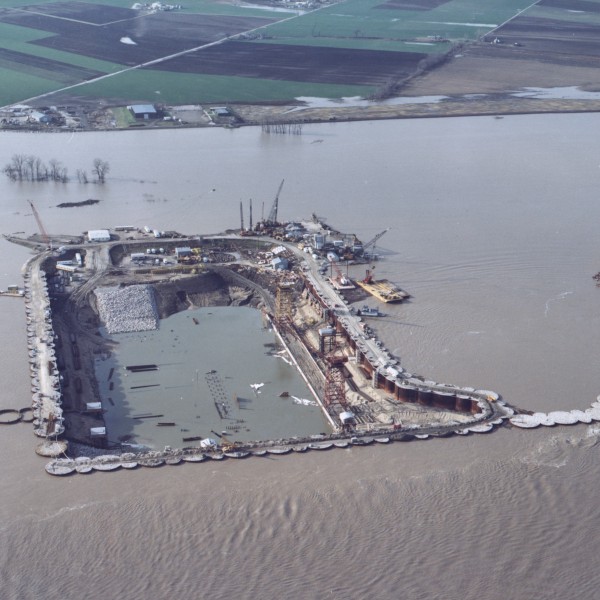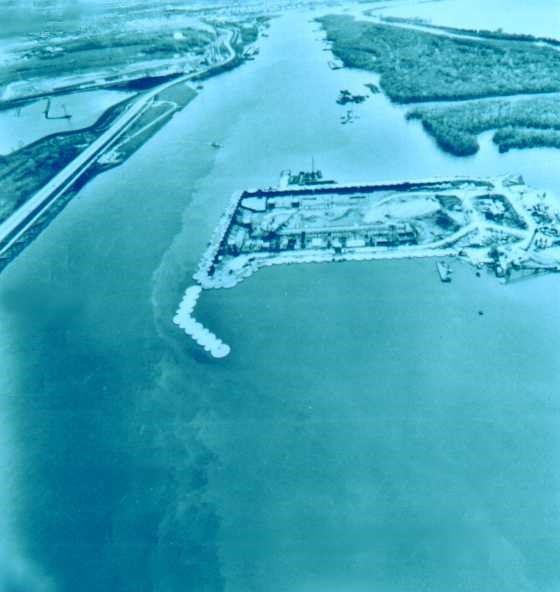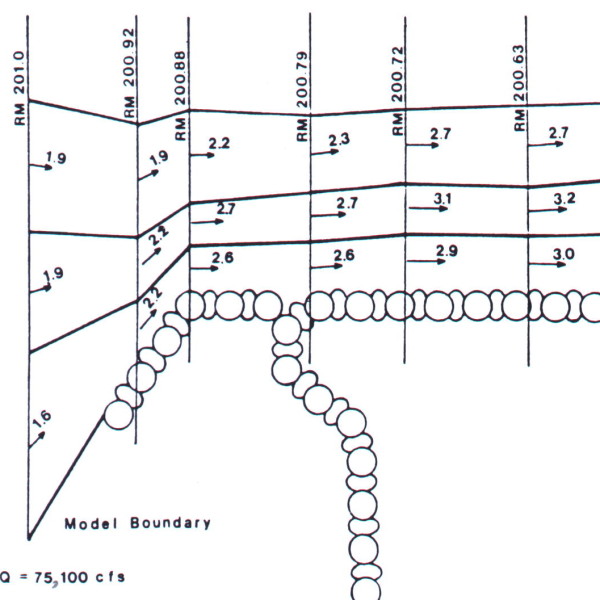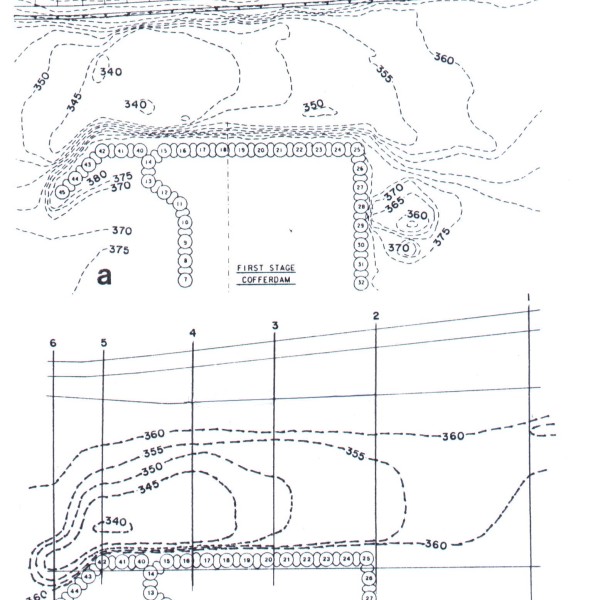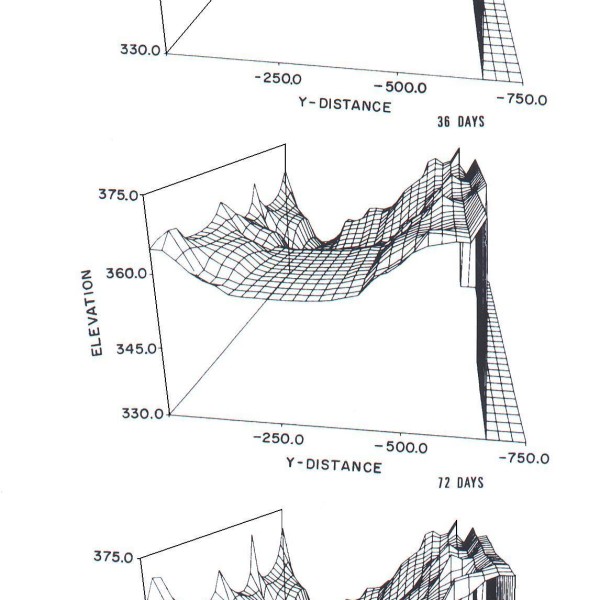Lock and Dam No. 26 is located on the Mississippi River near Saint Louis, Missouri. Due to increased demand on the aging system, the U.S. Army Corps of Engineers has replaced the old lock and dam with a new structure. The construction of the new Lock and Dam No. 26 was accomplished in 3 phases. In Phase 1 (Figures 1 and 2), a cofferdam was built on the right bank of the Mississippi River that constricted the flows by 52 percent. In Phase 2, part of this cofferdam was removed, and with new additions, it was moved to the middle of Mississippi River resulting in 44 percent constriction. During the Phase 1 construction, due to severe contraction the river segment along the cofferdam scoured up to 35 feet. Of this amount, 15 feet of it occurred in a single flooding event that was estimated as the 10-year flood.
In order to assess the additional scour that could occur during the rest of the Phase 1 and during the Phase 2 construction, a numerical modeling study was conducted. The GSTARS (Generalized Streamtube Model for Alluvial River Simulation) model developed by Dr. Molinas, President, Hydrau-Tech, Inc. was applied to study scouring patterns around the new Lock & Dam 26 site. The GSTARS model divides the flow channel into conceptual stream tubes. Hydraulic conditions and sediment transport is computed along each tube separately. As a result, 2-dimensional velocity and scour variation across the channel as well as along the river can be accounted for (Figure 3). Depth variation is computed by satisfying conservation of energy and momentum equations along the flow direction. As a result, the model provides three-dimensional topographical changes using a one-dimensional approach. During Phase 1, maximum velocities and consequently maximum scour occurred at the nose region of the cofferdam. GSTARS simulated the scour at the nose region and along the cofferdam very closely (Figures 4 and 5). Following the verification runs, potential for additional scour for Phase 1 and Phase 2 cofferdam configurations were investigated. It was determined that additional scour was expected and structural and pumping requirement changes were made to reflect computations.


